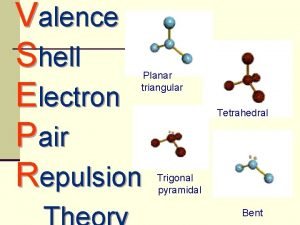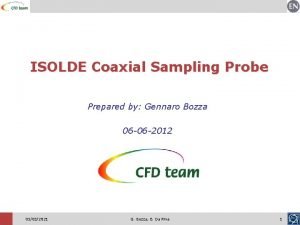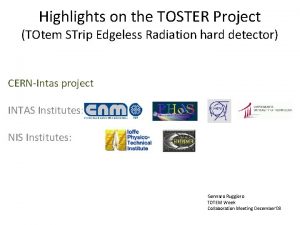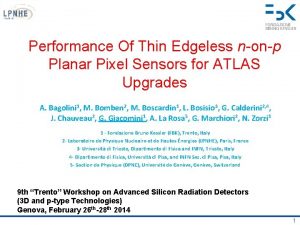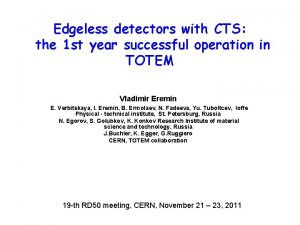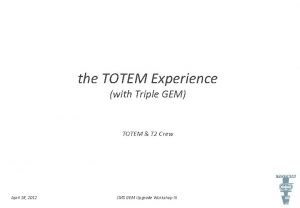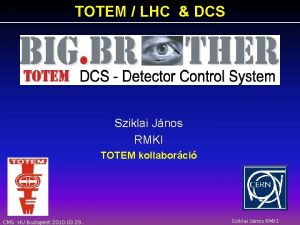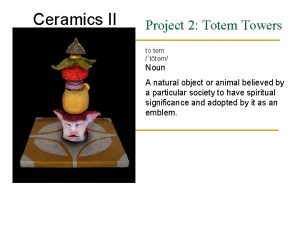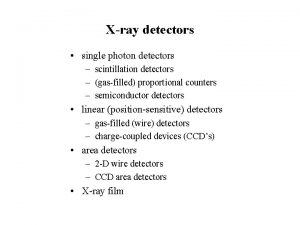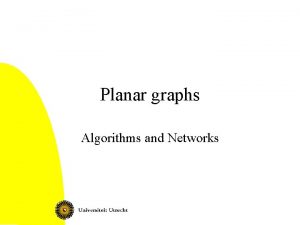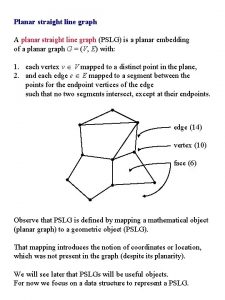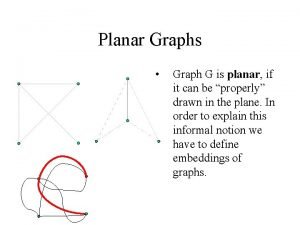Planar Edgeless Detectors for the TOTEM Experiment Gennaro


















- Slides: 18

Planar Edgeless Detectors for the TOTEM Experiment Gennaro Ruggiero CERN, PH Depart. On the behalf of the TOTEM Collaboration http: //totem. web. cern. ch/Totem

TOTEM, a different LHC Experiment Total cross-section Elastic Scattering b Forward physics Diffraction: soft and hard jet b jet

IP 5 Roman Pots at 147, 220 m from the IP CM S T 2 T 1 Inelastics Telescopes T 1 T 2 Experimental layout of the TOTEM Detectors Roman Pots at 147, 220 m from the IP

Roman Pot Unit Horizontal Pot Vertical Pot BPM Detectors overlap in the data taking position 10σ beam Special beam insertion allowing to approach the detector very close to the beam. Compensation system allows the movement from garage position (detectors away from the beam) to data taking position (detectors close to the beam) Roman Pot Motion Control integrated with collimator control system Each RP Unit equipped with one BPM

Condition imposed on the Roman Pots • Maximise acceptance at low |t|: edgeless Si-detectors minimised space between detector edge and window minimised window thickness • Resolution in t, f; precision of elastic extrapolation to t = 0 Spatial detector resolution • Background suppression: trigger segmentation number of planes • Redundancy enough planes

The Pot 150μm 500μm Ferrite The Pot 150μm The Pot has been object of a specific development. Is a stainless steel box. It’s thin window 150 μm thick with planarity of 20 μm is brazed on the bottom of the pot. It and separates the secondary vacuum of the detectors from the vacuum of the machine. When the RP is in the Data taking position will approach the 10σ of the beam. Ferrite plates mounted on the pot to reduce RF Interference

The detector package the “Champignon” Roman Pot Motherboard connecting the detector packages in the vacuum to the outside world VFAT chis Si microstrip detector Vacuum flange In each pot 5 u and 5 v oriented planes are inserted in form of a detector package. The plane-hybrid is made of kapton laminating a support plate of CE 07 (70% Si and 30% Al alloy) which matches thermal expansion of the silicon detector. The flexible pigtail guarantees a mechanical decoupling of the detector package from the “champignon” to align on the pot inner surface. Feed-through Connectors to detector hybrids

Commissioning of the pots in H 8 with muons V-coordinate U-coordinate

All 8 Roman Pots Units Installed in the LHC … few months ago First 2 Roman Pots Detector Packages … few weeks ago

The sensor: Edgeless Detector

Edgeless? How does it work… Standard Planar Silicon detectors have an edge. d >2 d • Protective structure at the edges • Enhancement of the performance at higher bias • Reduction of surface effects • Wide dead volume at the edge (>2 d) But if… Surface Current Suppression ICTR +ICR IBE EDGELESS DETECTORS with Current Terminating Structure Developed by: CERN/PH-TOT, Ioffe PTI- St. Petersburg, RIMST- Zelenograd

Roman Pot Si Edgeless detector u Very High Resistivity Si n-type <111>, 300 um thick, Vdep=20 V u Standard planar technology fabrication / dicing with diamond saw u Single sided detector, 512 microstrips (pitch 66 um) u strips at 45° from the sensitive edge u AC coupled (punch-through) Pitch adapter on detector (VFAT / APV 25 compatible) Measurement of leakage (bulk) current 70 n. A at 200 V

performance at the edge • Testbeam with muons (cern, X 5) • 4 prototypes of RP Detectors Packages with APV 25 chip • Packages (mis)aligned along the beam axis • The whole hosted in a coldbox for a ( Tsensor= -10°C) The “monster” coldbox Detector Package (6 tracking and 2 trigger planes) Orientation and overlapping of the 4 detector packages optimized two study the edges on the two internal packages Telescope arrangement 4 (z) 5 2 3 1 6

Signal in Edgeless detectors, 100 V Signal-to-noise distribution Beam profile Voltage scan

Efficiency and resolution Top test detector Accepted tracks in the test detectors Bottom test detector *bins are 0. 5 x 0. 5 mm 2 Strip charge sharing map Efficiency at the edge Residual profile

Radiation hardness? Real devices/ 24 Ge. V protons Test samples 1 cm 2 / 1 Me. V neutrons Surface current All detectors biased at 100 V Bulk current I∝ *Φ Data from a recent test beam (muons, H 8) comparing hits with a non irradiated detector superposed on the beam axis At the tested fluences these edgeless detectors seem to behave as standard p+-n strip detectors

Radiation harder? Further studies on radiation hardness are ongoing. Lately a Consortium under INTAS umbrella (groups from Barcelona CNM, University of Bologna, CERN, Lappeenranta TU, Ioffe St. Petersburg, RIMST Zelenograd) has joined together to mainly address radiation issues for Planar Edgeless Detectors with CTS (TOSTER Project). • Study of electric field at the edge with differt experimental tests • Test of different cut techniques • Simulations of the detector behaviour starting from the data acquired • Extrapolation at high dose • Design optimization (Part of the story can be read at the poster by E. Verbitaskaya) Fabrication of Edgeless detectors with Czochralski material, with an adapted CTS design We will see…

 Tetrahedral vs trigonal pyramidal
Tetrahedral vs trigonal pyramidal Gennaro autuori e michele del giudice
Gennaro autuori e michele del giudice Gennaro bozza
Gennaro bozza Accursio gennaro
Accursio gennaro Gennaro parlato
Gennaro parlato Gennaro e giulia
Gennaro e giulia Gennaro cordasco
Gennaro cordasco Rosario gennaro
Rosario gennaro Feature vectors
Feature vectors Streaming current
Streaming current Photo detectors
Photo detectors Hplc detector types
Hplc detector types Feature detectors
Feature detectors Vhv voltage detectors
Vhv voltage detectors Where are feature detectors located
Where are feature detectors located Giant wave detectors murmurs universe
Giant wave detectors murmurs universe Frontier detectors for frontier physics
Frontier detectors for frontier physics Photo detectors
Photo detectors Feature detectors ap psychology
Feature detectors ap psychology
